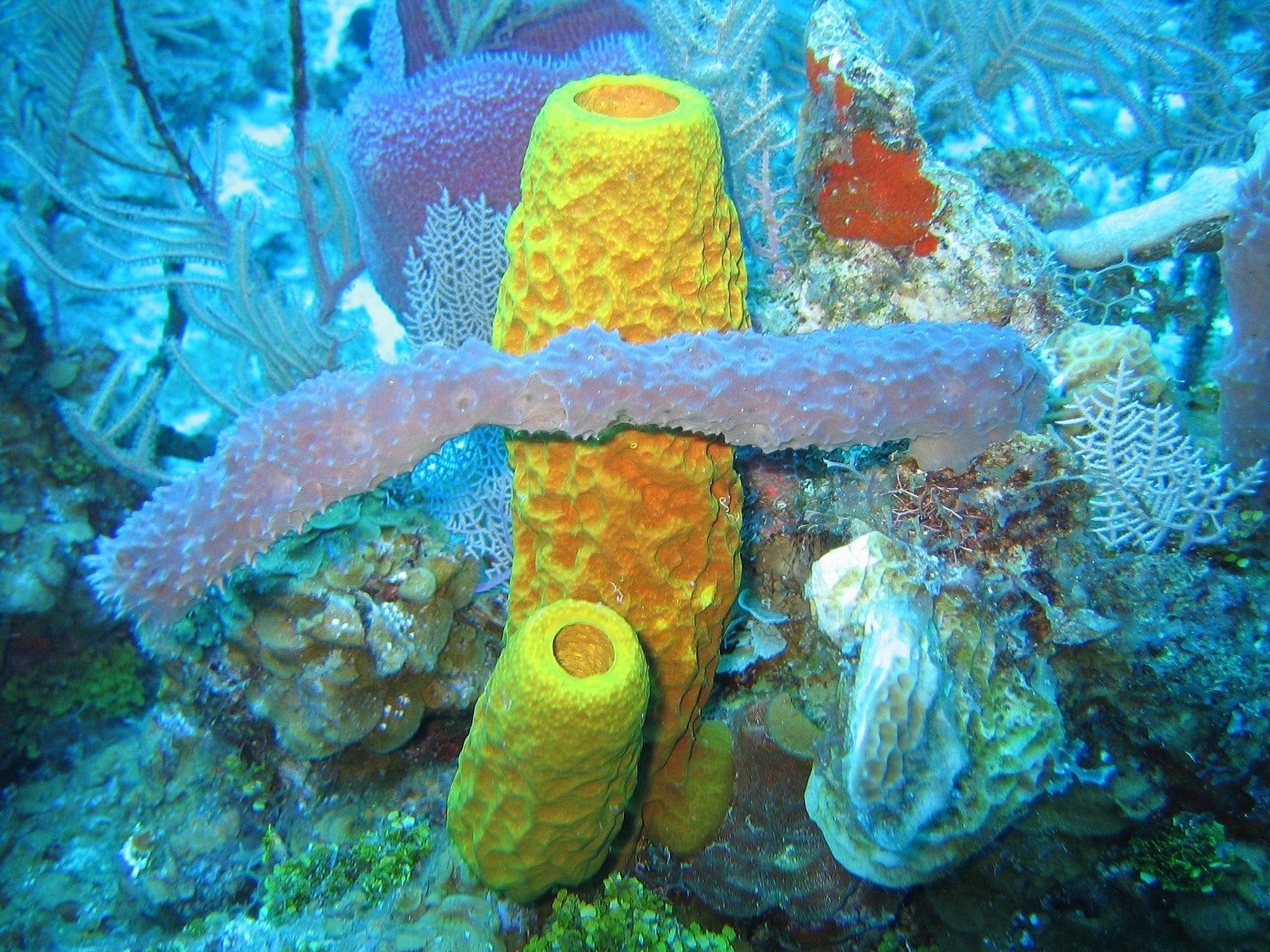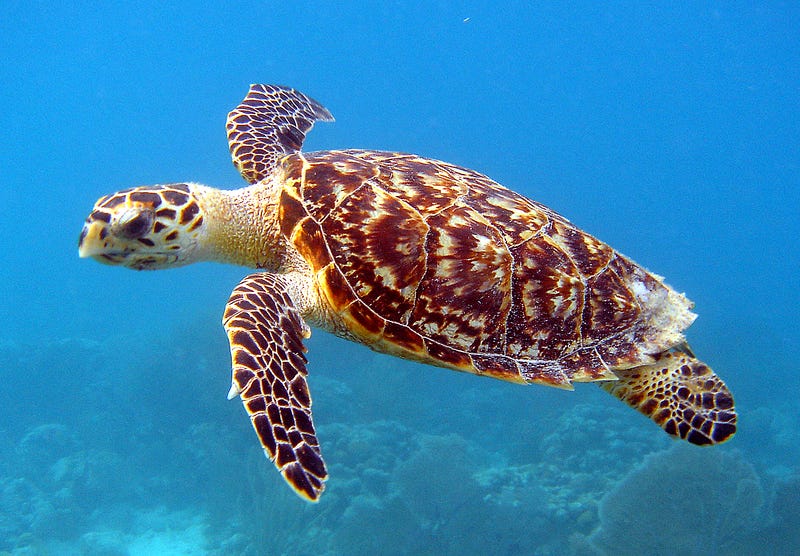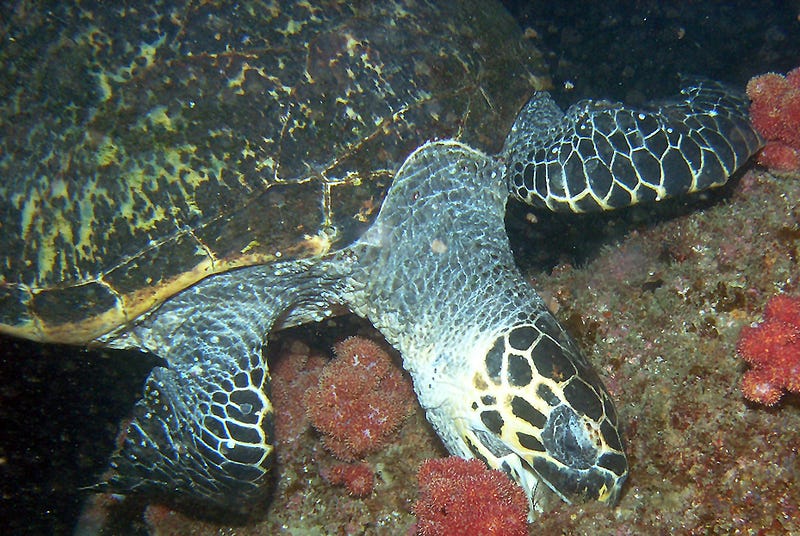
A sponge is, in many ways, so far removed from our understanding of what an ‘animal’ is that it can be easy to forget that they do belong to that group. They are immobile, have no tissues, no organs, no nervous system of any kind, and the vast majority are passive filter feeders (a few have become predators and feed on small crustaceans). They simply pass water through their body cavity and specialized cells capture and absorb edible particles.
However, this week we’re not focusing on the feeding behavior and diet of sponges, but on those animals that feed on them. The list of spongivores is a relatively short one. This is largely because of the unappetizing nature of sponges. Much like many plants, as we’ve discussed previously this season, sponges have physical or chemical defenses against predation (or both).
The majority of sponge species are not as soft as the commercial bath sponges you might use to help clean yourself. Sponge structure consists of a combination of a protein fiber called spongin and mineral elements known as spicules. These spicules are usually composed of either silica or calcium carbonate and are quite sharp. Many sponges are also toxic and unpalatable, although there is evidence that the toxins they secrete are more of a deterrent against competitors for living space than against predators.
Because of this, sponges can easily take over a coral reef ecosystem if not kept in check. Fortunately, there are a few species that do eat them, and some that even specialize their diet around consuming them. First, we have the emperor angelfish, Pomacanthus imperator, a brightly colored fish native to the Indian and Pacific Oceans. Its primary diet consists of algae and sponges. In order to deal with the sharp spicules, the food gets coated in a layer of mucus to protect the gut lining.

One of the premier spongivores, however, is the hawksbill sea turtle, Eretmochelys imbricata, so named for the resemblance of its beak to a bird of prey (neither birds nor turtles have teeth, but their beaks are an example of convergent evolution, as they are not particularly closely related to each other). Sponges make up between 70 and 95% of a hawksbill’s diet. The rest consists of algae, sea anemones, sea jellies, and similar organisms. Because of the sheer proportion of sponges in the turtle’s diet, it is much more confined to tropical waters compared to other sea turtle species, which can roam farther into temperate oceans for foraging if need be.


Many of the hawkbill’s preferred sponge prey species (it will generally focus on certain types of sponges and ignore the others) as well as its other prey are highly toxic to most species. This has the side effect of making hawksbill flesh mildly toxic as well. Because of this, there is much less history of humans consuming this particular sea turtle species for its meat compared to more savory options like the green sea turtle, Chelonia mydas (although it does still occur). Unfortunately, something else made this species an even more attractive target. The scutes (scales covering the shell) of the hawksbill are beautiful and highly pliable. This made them an excellent material for decorative purposes. Hawksbill carapace was the source of the majority of ‘tortoiseshell’ material used in all sorts of items including combs and frames for glasses.
Even though the trade in tortoiseshell was banned in 1973, the extensive commercial exploitation of the hawksbill has taken its toll. It is now listed as Critically Endangered (see the introduction to Season 3 for the exact definition of that term). Unfortunately, this can have a ripple effect throughout coral ecosystems. If species like the hawksbill are not around to consume the sponges, they can outcompete and overwhelm the other sessile (non-moving) organisms. This can stress the corals themselves, as well as the multitude of species that depend on them for homes and foraging.
In this manner, foraging and diet can have wider-ranging consequences, especially with regard to specialist consumers of generally unappealing prey. If only a handful have species have adapted countermeasures to a particular food source and its chemical and physical defenses, the decline or removal of one of those can cause an increase in the prey item and subsequent shift in ecosystem dynamics. Keep that in mind as we continue through Season 5: some of these odd diets and the foraging strategies attached to them are more than just a novelty. They are an essential component in maintaining ecological balance.
If you’re enjoying this season so far, please consider sharing my stories with your friends and, as always, let me know what you think of each installment. What sorts of stories and information resonate with you? Are there things you’d like me to go into more detail about? What kind of topics would you like to see for future seasons? All suggestions are welcome and appreciated.